The weather extremes of summer and winter can stress home lawns to reveal bare spots or weed takeover. If your lawn is looking worn, it may be time for a turf renovation. Spring and fall are the best times to rejuvenate and reseed a cool-season lawn.

Start With A Yard Clean Up
First, start with some yard clean-up so you can truly assess the state of your grass. Rake and remove leaves, sticks, or other debris to get a clear picture. Inspect for thin spots, bare patches, or signs of damage.
To avoid repeating the current problems, take time to assess why the grass may have failed. Were there problems with poor irrigation or drainage? Is there a sun/shade imbalance for your grass type? Or are there problems with thatch, weed, or disease? Addressing these problems upfront will improve your odds of success and will prolong the health of your lawn.
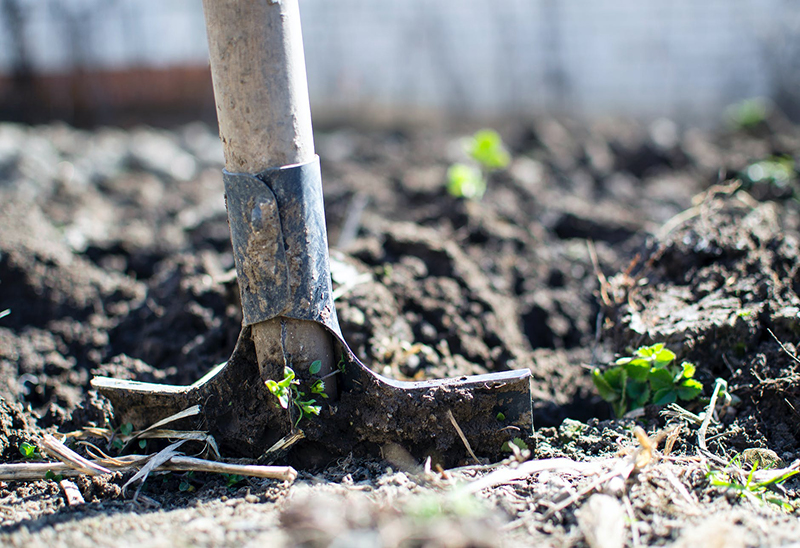
Prep Your Site
Take a soil test. If you haven’t tested your lawn’s soil in a season or two, now’s the time to do it. Having a recent pH reading and nutrient evaluation can reveal a host of easily correctable issues. Plus you’ll get precise recommendations on how much fertilizer to use. Soil tests are available from private labs and through your county Extension service. It’s a simple step that makes a big difference in the accuracy of your efforts.
Now we can take some action! Start by removing competing vegetation. New seedlings can’t outcompete established weeds. Depending on the area size you are renovating, it may be easiest to hoe or to pull weeds by hand. If you are reseeding a large and weedy area, you may need to use a broad-spectrum herbicide to kill back the competition. Know that if you’re battling perennial grasses, like bermudagrass, it may take several applications a few weeks apart to get good control.
To prepare healthy but thin areas for overseeding, aerate or dethatch the existing grass area to reduce soil compaction. If you have clay soil, aerating is easiest to do when the soil is damp but not wet. Mow the existing grass at a low setting to expose the soil in preparation for seeding.
Prepare the Seedbed For Reseeding
Loosen exposed soil, ideally to a depth of 4-6” but a minimum of 3”. Rake open areas to smooth the seedbed. Small patches can simply be raked and spread by hand.
Add the recommended amounts of fertilizer and lime from your soil test results. New grass will need a turf starter fertilizer to support new growth. But try to limit the distribution to areas being seeded, otherwise, you’ll be pushing growth that has to be mowed more often. This can be done by hand in patches, hand-cranked spreader in small areas, or a drop spreader in larger areas. Your goal is to spread evenly throughout the space, so criss-cross the area in a ‘plus’ pattern.
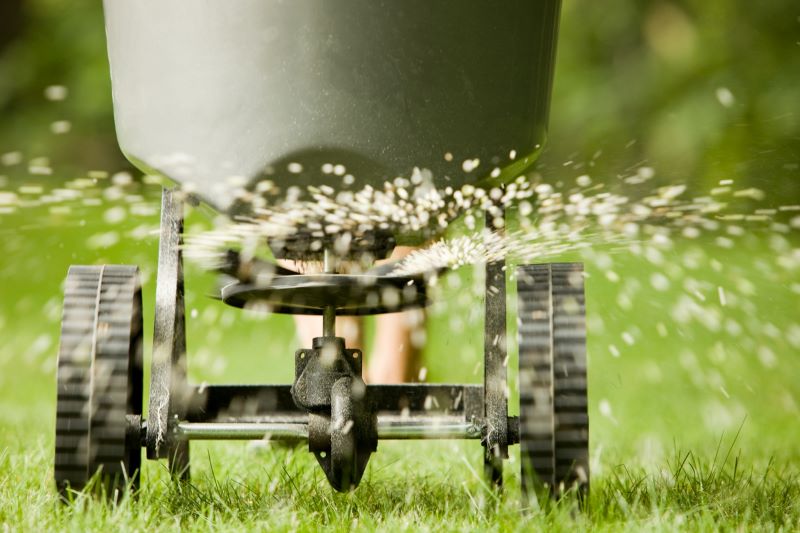
What’s The Best Grass Seed to Renovate Your Lawn?
If you discovered that your previous grass species didn’t fare well in your location, now’s the time to choose a better-suited variety. Have trees grown up to provide more lawn shade? Is your soil more prone to drought than you thought? Or are you looking for a low-growing variety for less maintenance? Deer Creek Seeds has grass seed suited for all of these environments.
To improve lawn performance, consider a mix of turf-type grasses rather than a single variety. Turf-types are specifically designed for lawn use, not pastures. Improved turfgrass cultivars are selectively bred to tolerate shade or drought, resist disease, and handle foot traffic. Choosing a combination of turf seeds combines the benefits of several varieties.
Deer Creek Seeds offers seed mixes for many conditions, including:
- Warm areas needing disease resistance (Five Way Fescue Turf Mix)
- Fast draining soils (Sandy Soil Turf Mix)
- Low growing varieties for low maintenance/input areas (Low Grow Fescue)
- Low light or mixed sun/shade lawns (Shady Turf Mix)
- Quick results (Speedy Green)
If you’re not sure or don’t have specific concerns, we also offer all-purpose blends like our Sun & Shade Turf Mix and Sunny Turf Mix. Both seed mixes include multiple improved turfgrass seed varieties for all-purpose use.
It’s important to keep a record of which seed type you plant. It will come in handy for future season’s fertilizer recommendations and overseeding. An easy way to keep track is to take a picture of the seed label with your phone and add it to your favorites photo album for quick reference.
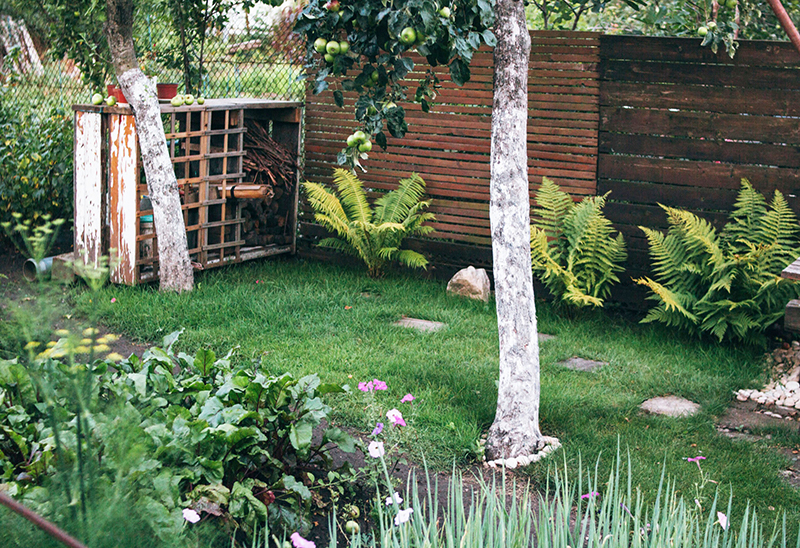
Reseeding vs. Overseeding Your Lawn
If you are reseeding bare patches or large areas that have been killed back and prepared for planting, you’ll follow the same steps as seeding a new lawn, perhaps just on a smaller scale. But the seeding rates and procedure will be the same as establishing a new lawn.
Overseeding is a bit simpler than starting from scratch. Seeding rates will be lower - about half of starting a new lawn. Check your grass seed variety tag for specific amounts and follow them closely. Seeding rates are precisely calculated. It’s not a ‘more is better’ approach! Using too much seed can choke out young growth and cause stunted growth or complete failure. Follow the guidelines and be confident that your grass will have the best chance for success.
Use a hand-crank or drop spreader to overseed the same as you would to start a new lawn. Follow the same criss-cross pattern for even seed distribution. The existing grass will help conserve moisture, so mulching is less important. But if the grass was sparse to begin, adding a light layer of straw mulch will help keep the germinating seed moist.
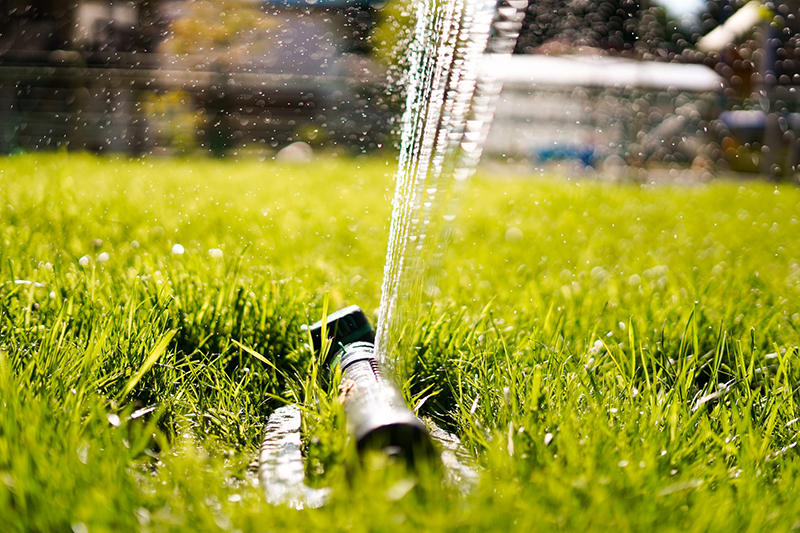
Lawn Maintenance Tips
Watering
Keep newly seeded areas watered twice per day until they have germinated and you see new growth. Gradually taper your watering frequency to once per day for 60 days and then further back until you (or nature) are providing an inch of water per week.
Mowing
Allow newly seeded areas to grow until they reach 4-6 inches tall before mowing. Overseeded lawns should be mowed short to allow sunlight to reach new seedlings. As new growth rises, raise your mower height each week until the new seedlings reach that 4-6 inch height. Then mow as you normally would.
Weed Management
Using a high-quality seed and appropriate seedbed preparation should reduce your initial weed concerns. Broadleaf weeds can be treated with an appropriately labeled broadleaf herbicide once the lawn is being regularly mowed.
Foot Traffic
Remember that new grass is tender! Try to avoid walking on newly seeded areas until the grass has matured at least a month. Also, keep an eye out for areas of drought or traffic stress that may need a little extra water or protection to keep them thriving.
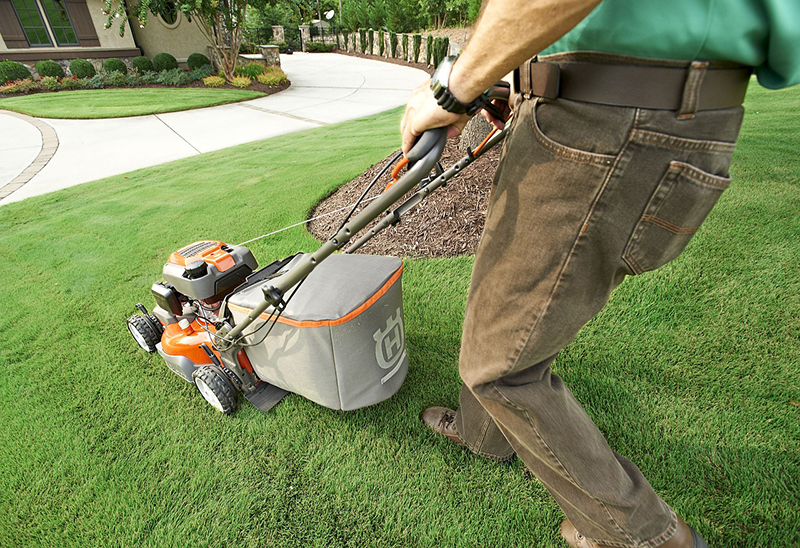
Lawn Mower Maintenance
You and your mower are a lawn care team. So take time to perform annual mower maintenance to keep it in top condition. Start the season with a full tune-up at your local equipment dealer. If you’re the DIY type you’ll want to change the mower’s engine oil as well as replace the air filter and spark plug each season.

Don’t forget the blade - it’s where the action happens! Skip the bagger and opt for a mulching blade to return grass clippings to the soil. These frequent tiny bits provide ongoing mulch and nutrition to the grass’ roots. Contrary to popular belief, grass clippings don’t contribute to thatch - over-fertilizing does!
Sharpen your mower blade often, ideally every four to six cuts. This will ensure that the blade makes a clean cut and doesn’t leave ragged brown edges on your grass. Mow frequently and in small increments. Take off no more than a third of the grass blade at any time.
Home lawns are the backyard playgrounds, pick-up football fields, and canvas for your house’s curb appeal. If yours is looking a bit lackluster after a stressful season, rejuvenate your lawn this year by overseeding or reseeding to make it lush. Keep it healthy and your lawn will reward you for seasons to come.

Additional Resources:
- Colorado State University has an excellent publication and fact sheet on renovating your home lawn with an easy-to-follow do’s and don’ts checklist for new seed.
- Iowa State University Extension has a helpful guide on lawn overseeding. And another on selecting the right grass species.
- The University of Wisconsin Extension has an outstanding Lawn Establishment & Renovation guide that compares seed vs sod and has a handy key to reading seed bag labels.
- North Carolina State University Extension has a definitive handbook on lawn establishment for those in transition zones who may be deciding between warm and cool-season grass types.
- The University of Illinois Extension has a concise lawn maintenance guide that you could post in the garage or add to your calendar.
- If you’ve got a warm-season lawn and dislike the brown dormant stage, the University of Florida has a quick guide to overseeding warm-season grasses for fall green color.
- Alabama State Extension has a great article on The 10 Steps of Lawn Mower Maintenance for those of us who like to work on our own equipment.



